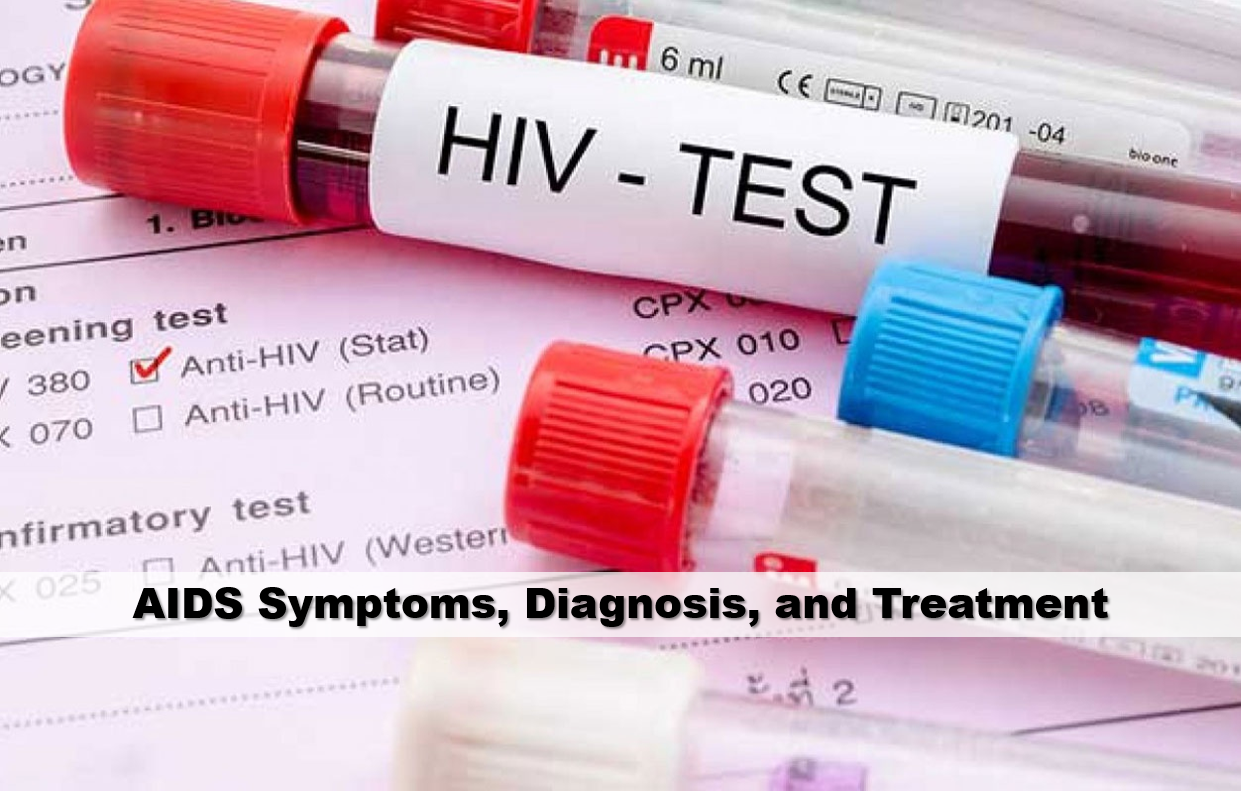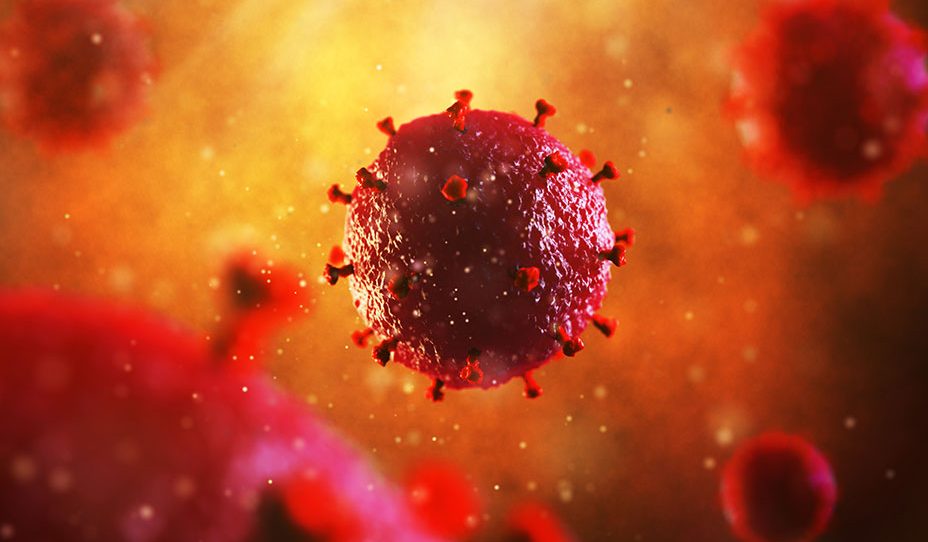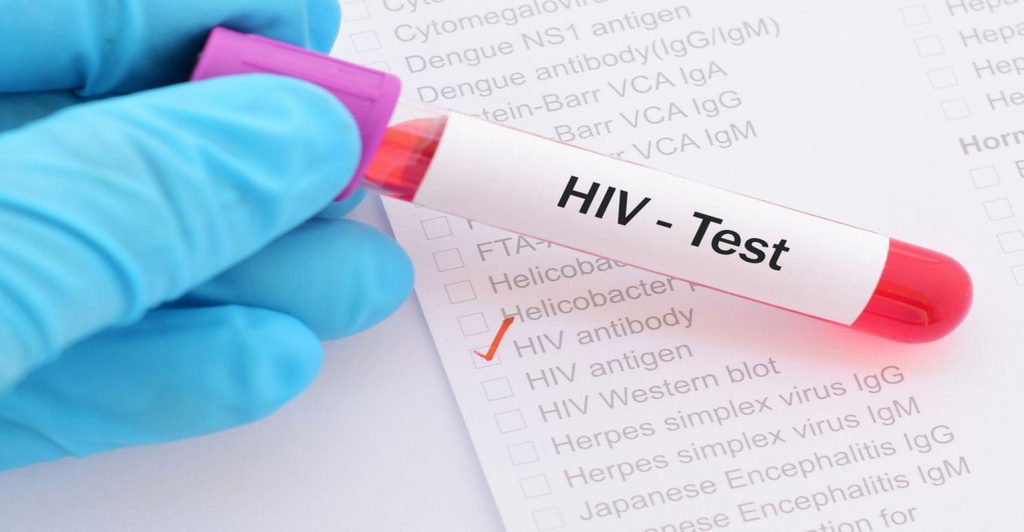AIDS Symptoms, Diagnosis, and Treatment (What Is HIV?)

What is AIDS and how it is caused? What are the symptoms of AIDS? Symptoms of AIDS may appear years after receiving the virus. The disease initially weakens the immune system slowly in the body without symptoms. In this case, a healthy-looking person may be a carrier of HIV; symptoms begin to manifest over time. The HIV carrier may not look or feel sick, because it is not the HIV itself that causes AIDS symptoms or deaths in carriers, but infections that can occur more easily as the body is completely vulnerable to the collapse of the immune system. An HIV-infected person has symptoms like colds, fever, fatigue, and weakness within about 3-4 weeks of receiving the virus.
What is AIDS?
AIDS ( Acquired Immune Deficiency Syndrome) is a virus-induced immune disease that causes that HIV destroys important cells that play a role in the body’s defense and cause suppression of the immune system. This disease, which is usually shortened as HIV / AIDS, can cause severe infections, even cancer, and similar diseases. To detect the disease in the early stage and prevent the transmission to healthy people, symptoms should be known and information about the ways of transmission and prevention methods should be known.

AIDS Symptoms
About 40 to 90% of people have flu-like symptoms 2-4 weeks after HIV infection, while other people do not feel sick at this stage. Early infection is defined as HIV infection in the last six months and includes acute infections.
- Loss of weight
- Fever
- Fatigue
- Long-term swelling of the lymph nodes in the armpit, groin or neck
- Diarrhea lasting more than a week
- Wounds in the mouth or genital organs
- Pneumonia
- Red, brown, pink or purplish spots on the skin or under or in the mouth, nose, or eyelids.
- Memory loss, depression, and other neurological disorders.
Each of these symptoms may be related to other diseases. So, the only way to know if you have HIV is to have a test.
How is AIDS transmitted?
AIDS is spread by the ingestion of body fluids of people infected with HIV into the body of people who have not contacted with the virus. Body fluids that are effective in spreading the virus are listed as blood, sperm, vaginal secretion, and breast milk.
Sexual transmission: 80-85% of HIV infections occur through unprotected sexual intercourse. In the HIV-positive male’s sperm cell, the virus in the HIV-positive woman’s vaginal secretion enters the body’s mucosa during sexual intercourse. Even a single unprotected relationship with an HIV-positive individual can lead to the development of AIDS.
|The Five Most Common Sexually Transmitted Diseases||
Transmission by blood: HIV can be found in the blood of infected patients and spreads as a result of contact with healthy individuals. The transmission usually occurs as a result of injury with instruments that have contact with the patient’s blood, or by contact of infected blood with skin or mucous fluids. The group most at risk for this type of transmission is health workers.
Transmission from mother: A virus-infected mother can transmit the virus to her infant during pregnancy, during labor, or after breastfeeding.

How is AIDS diagnosed?
The diagnosis of HIV / AIDS is made by the HIV test, which displays antibodies in the blood or antigens that are as a part of the virus. Approximately 3-8 weeks after the individual’s contact with the virus, the immune system reacts first, and the number of antibodies in the blood begins to increase rapidly. In some cases, the number of antibodies does not show up for as long as six months. Tests examining the antigen and antibody Sare generally preferred as the occurrence of such a condition will delay the diagnosis of the disease. This situation makes possible the diagnosis from the third week after the patient’s contact with the virus. The first test for diagnosis is ELISA. If the test does not prove the presence of HIV infection, the result is considered negative. If the ELISA test is positive, the test is repeated, and if the result is positive again, the other test called Western blot is performed. If the test is positive, the person is diagnosed with HIV / AIDS.
Treatment Methods For AIDS
The main purpose of the treatment of HIV infection is to prevent the decrease of the CD4 immune system cell, which starts to decrease with the entry of the virus into the body. To perform this treatment, at least three different medication has been developed. The drug to be used in the treatment is determined according to the resistance of the virus to the drug.





